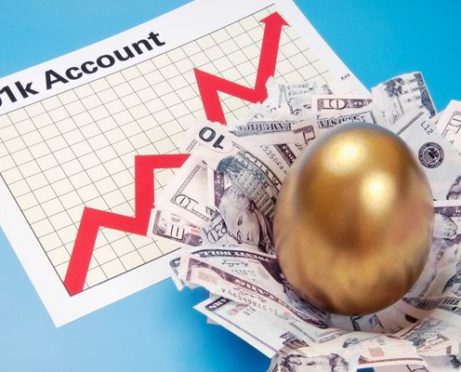
Many of you have been savvy savers. Let's talk about something important for our golden years that often goes unnoticed – Required Minimum Distributions (RMDs). These are the rules set by the government that tell us when and how much we should start withdrawing from our retirement accounts like 401(k)s and traditional IRAs. Rest assured;32 we are here to ensure a seamless experience for you.
The Changing Age of RMDs: Catching Up With the Times
If you are confused about exactly when your RMDs kick in, be kind to yourself as there have been changes within a short period. At one point, the RMDs kicked in at age 70 ½. Four years ago, in 2019, that was changed to age 72. Following the unveiling of the SECURE 2.0 Act, the age was again changed (to 73). As of 2023 — and until 2032 — your RMDs will only kick in if you have turned 73. By 2033, the starting age will further increase to 75.
Let’s break this down into a few simple tables.
In 2022:
| Year of Birth | Age in 2022 | 2022 RMD? |
| 1950 | 72 | Yes |
| 1951 | 71 | No |
Now let’s look at this year:
2023
| Year of Birth | Age in 2023 | 2023 RMD? |
| 1950 | 73 | Yes |
| 1951 | 72 | No |
And next year:
2024
| Year of Birth | Age in 2024 | 2024 RMD? |
| 1950 | 74 | Yes |
| 1951 | 73 | Yes |
Roth IRAs: The Exception to the Rule
It’s not all bad news, however.
For instance, Roth IRAs get a pass on RMDs.
That's right — if you've been contributing to a Roth IRA, you're exempt from these withdrawal requirements. It's one of the perks of this account type, making it a popular choice for many.
Here is the list of retirement accounts subject to RMDs:
- Traditional IRAs
- SEP IRAs
- SIMPLE IRAs
- 401(k) plans
- 403(b) plans
- 457(b) plans
- Profit-sharing plans
- Other defined contribution plans
Tax Implications: Navigating the Fiscal Waters
RMDs are about more than just withdrawals; they also involve taxes. These distributions are subject to ordinary income taxation. Given the fluctuating tax brackets and the recent peak of 37 percent for the top rate, strategic planning becomes crucial. However, there is a silver lining: thanks to inflation, tax brackets expand, potentially reducing your tax rate on distributions.
 Penalties: A Softer Sting But Still Worth Avoiding
Penalties: A Softer Sting But Still Worth Avoiding
Missed an RMD? The IRS used to penalize you 50 percent of the amount you failed to withdraw. These days, the penalty has been reduced to 25 percent and if you rectify the situation within two years, it drops again (to 10 percent). While it's less daunting, it's still something you'd want to avoid.
Calculating Your RMD: A Simple Formula
Calculating your RMD is straightforward. Just divide your account's year-end balance by the IRS life-expectancy factor. If you have multiple IRAs, you can sum up the RMDs and withdraw from any combination of these accounts. However, for 401(k)s, each account needs its own withdrawal.
Working Past 72: An Important Caveat
If you're still working past 72 and don't own more than 5 percent of the company, you might be able to delay RMDs from your current job’s 401(k). But — and it's a big “but” — this doesn't apply to IRAs or old 401(k)s. So, keep a close eye on those accounts.
Roth Rollovers and Longevity Annuities: Clever Moves
Thinking of rolling your Roth 401(k) into a Roth IRA? Go for it! This move lets you skip RMDs. If you're playing the long game, consider a Qualified Longevity Annuity Contract (QLAC), generally available from any insurance provider. It reduces your RMDs and starts paying out around age 85, per IRS guidelines.
Some Tax Minimizing Strategies For Taxes on RMDs
1. Early Withdrawals:
Once you hit 59 ½, you can start dipping into your retirement accounts without any tax penalties. If you start withdrawing a bit more in the early years of your retirement, you could actually lower your RMDs later on. It's like playing a strategic game of financial chess! Plus, this move could let you delay your Social Security benefits, which means more cash in your pocket if you wait until you're 70.
2. The Roth IRA Conversion Trick
You can convert your traditional retirement funds into a Roth IRA. Roth IRAs don't have RMDs and offer tax-free withdrawals. Sure, you'll face a tax bill for the conversion year, but it might just be worth it to avoid future RMDs and enjoy tax-free retirement funds. Remember, though, this isn't a one-size-fits-all solution, so chatting with a tax professional could be a wise move.
3. Work a Bit Longer, Perhaps?
If you're not ready to hang up your work boots, there's good news. Keeping your job can help you avoid RMDs from your current employer's 401(k). However, this clever loophole doesn't apply to IRAs or 401(k)s from past jobs. Plus, working longer means you can also delay those Social Security benefits, giving you a bigger payout later.
4. Generosity Pays Off: Charitable Donations
 Fancy doing some good with your RMDs? Consider donating them to charity. You can give up to $100,000 from your IRA directly to a qualified charity — tax-free!
Fancy doing some good with your RMDs? Consider donating them to charity. You can give up to $100,000 from your IRA directly to a qualified charity — tax-free!
It's a win-win: you get to support a cause you care about and keep your tax bill lower.
Just make sure the transfer is done right to avoid any hiccups.
5. Enter the World of QLACs
As mentioned earlier in this article QLACs are a nifty little tool in your retirement planning arsenal. You can use part of your retirement fund to buy a QLAC, and you won't have to start taking payments until you're 85.
The best part? The money you put in doesn't count towards your RMD calculations. But remember, there's a cap on how much you can put in ($200,000).
6. The Spousal Age Gap Advantage
If your spouse is at least 10 years younger than you and the sole beneficiary of your retirement account, you've got a neat option. You can use their longer life expectancy to calculate your RMDs, which could mean smaller withdrawals. This doesn't work, though, if your spouse is close to your age or if you have multiple beneficiaries.
Navigating RMDs effectively can significantly impact your retirement finances. By exploring options like early withdrawals, Roth IRA conversions, or charitable donations, you can tailor your approach to suit your financial needs.
Thoughtful planning now can lead to a more manageable and tax-efficient retirement.
Indeed, never underestimate the importance of giving your financial advisor a quick call if you need clarity on any of the above.










